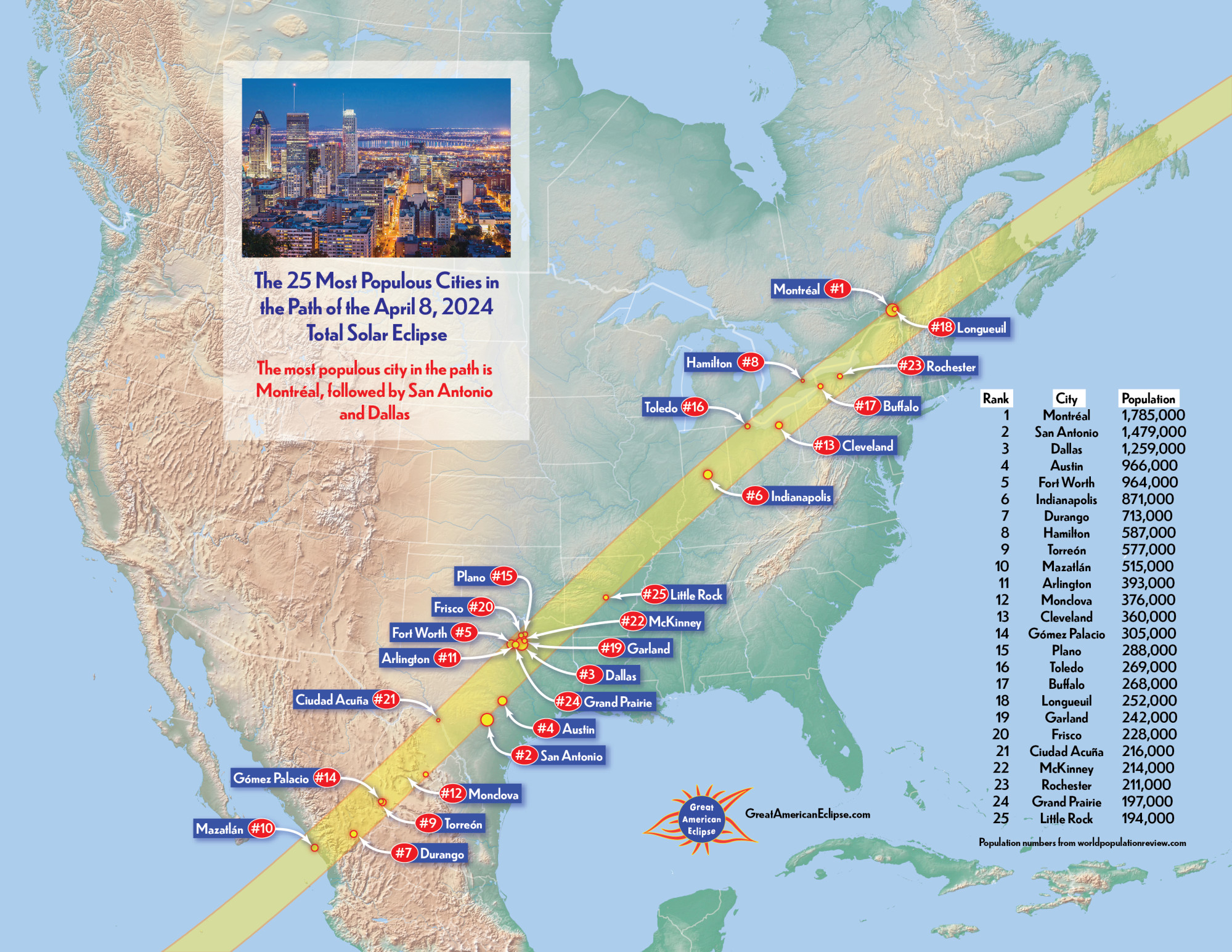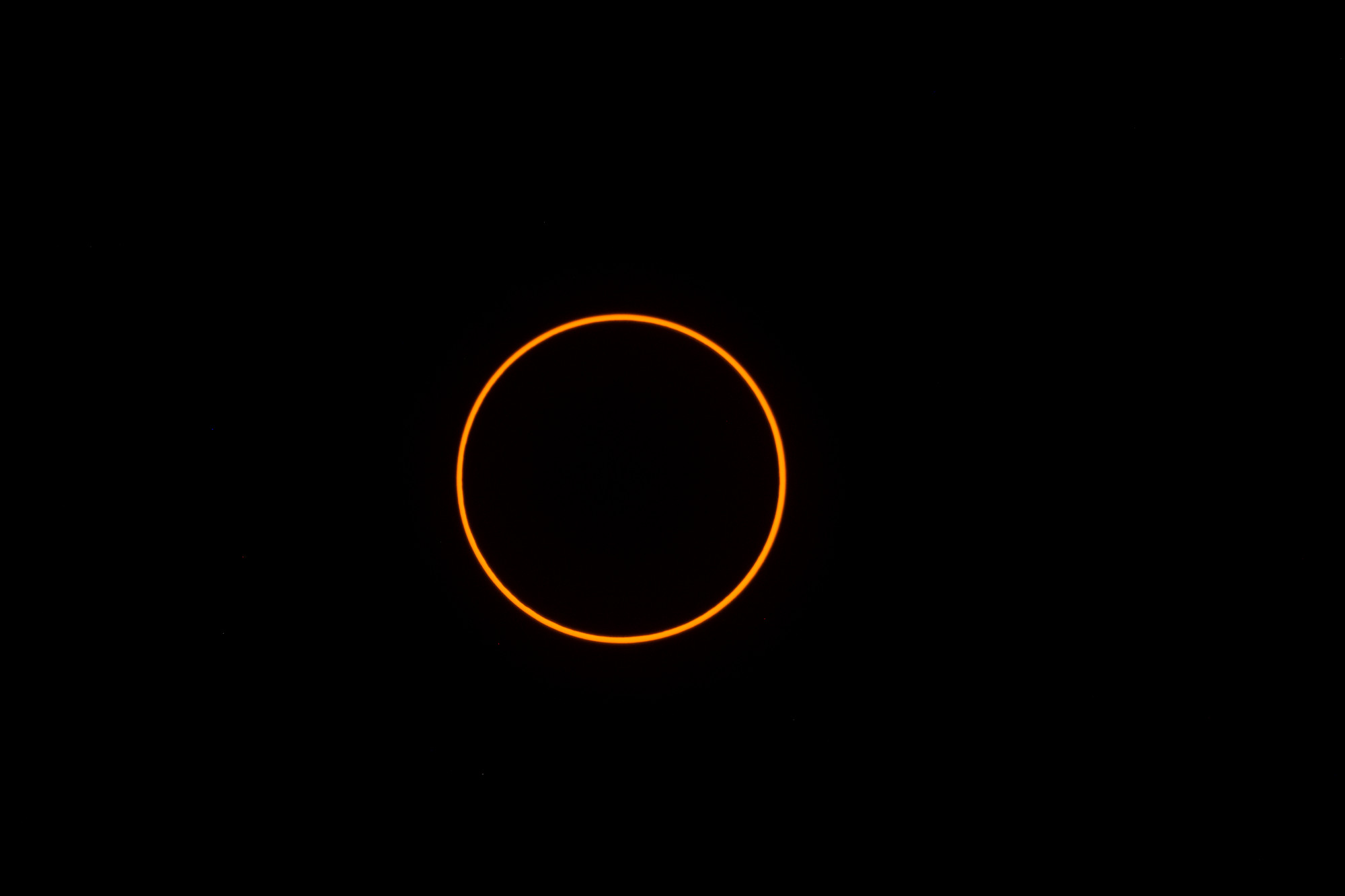
Best places to see the 2024 Great American Eclipse and 2023 ‘ring of fire’
- April 8, 2024 will see a Great American total solar eclipse that promises to be even bigger and better than the one that took place in 2017
- Remarkably, it comes with a warm-up – on October 14, an annular solar eclipse, causing a ‘ring of fire’, will be visible from across the southwest US
“Pull over, it’s about to start!”
With the camper van stationary on the side of Wyoming’s remote Highway 26, I jump out into the dust and thrust a pair of eclipse glasses into my wife’s hands.
“It’s already taken a really big bite,” I say, as I check the progress of the moon across the sun. We have driven 80 miles (130km) since breakfast to escape clouds and are now under a clear sky.
The sun is shrinking rapidly. The light fades and the crickets begin to hum ever louder. A cool breeze wafts across us and my heart beats faster. I’ve read about what we are about to experience and have imagined many times being in just the right place at the right time.
Totality is coming.
Where to see Asia-Pacific’s eclipses from 2019 to 2028
The shadow of the moon arrives and a strange silvery twilight suddenly takes hold. The sun is now just a couple of shrinking beads.
Over five seconds, the light plummets as the beads disappear. The day has become night and the sun a black hole in the sky. Around it, huge white spikes appear – the sun’s usually hidden outer atmosphere, or corona.
Through binoculars, I can see three pink loops on one side: explosions on the surface of the sun. All I can manage is “Oh wow!” on repeat.
A truck blasts past us on the highway, headlights on full.
Is this Australia’s best off-road adventure? Wild times in the Kimberley
A bead of light appears on one side of the moon, creating what looks like a diamond ring in the sky. Within seconds, its jewel becomes too bright to look at and the landscape is suddenly lit again. The grasshoppers are silent. As I hug my wife, we both have tears in our eyes. That’s what awe can do.
There are few more thrilling reasons for travel than to witness a total solar eclipse. They occur about 13 times in any 18-year period, so they’re not particularly rare, but mostly the moon’s shadow falls on our planet’s oceans.
For one to cross an entire continent – as the Great American Eclipse did so memorably for me on August 21, 2017 – is special. Just six years, seven months and 18 days later, it’s about to happen again. And this time it’s going to be even bigger and better.

On April 8, 2024, at least 32 million people will be in a 115-mile-wide path of totality stretching through Mexico, 15 US states and southeastern Canada. This “Great North American Eclipse” will see totality last for as long as four minutes 28 seconds, the longest on land for more than a decade.
You must be within the narrow path of totality to experience the event at all, but how long you get also depends on where you are within that path.
“The longest duration of totality anywhere on the path will be in Mexico and the further along the path you go to the northeast, totality will last for less time,” says Dr Angela Speck, co-chair of the American Astronomical Society’s Solar Eclipse Task Force.
“You’re only going to get four-and-a-half minutes of totality if you’re in the centre of the path. If you’re at the edge, you get much less time.”

Remarkably, the Great North American Eclipse comes with a warm-up.
On October 14, 2023, an annular solar eclipse will be visible from across the southwest US. It’ll be caused by a new moon eclipsing the sun while it’s slightly farther from Earth, causing a circle of sunlight around the moon for a few minutes – the “ring of fire”.
An annular solar eclipse is not as moving as a total solar eclipse; it doesn’t get dark, you can’t see the sun’s corona and you have to wear eclipse glasses the entire time. However, an accident of geography means the “ring of fire” will visit some popular outdoor destinations in the US Southwest, including Texas.

On average it takes 375 years for any location on Earth to see two major solar eclipses, but the same 120 square miles of Texas Hill Country, close to San Antonio and Austin, will experience totality both times. And this is classic holiday territory, with trees, rolling hills, vineyards and winding roads.
“We have everything from tent camping and RV camping to cabins, luxury homes and ranch stay,” says Erica Sagebiel, director of the Texas Hill Country River Region.
To experience October’s “ring of fire”, though, there should be few places better than Albuquerque, New Mexico.
‘Face my fear’: why sensation seekers always look for the next thrill
Albuquerque has statistically the best prospects for clear skies on eclipse day, and there’s an extra bonus, too.
“Albuquerque will be ground zero because the eclipse takes place on the last Saturday of the International Balloon Fiesta,” says Jayne Aubele, senior educator at the city’s New Mexico Museum of Natural History and Science, referring to the annual hot air balloon festival widely considered to be the biggest and best of its kind in the world.
A combination of the two events could mean more than 100,000 people coming to visit.
“Everyone with open space is expecting people,” Aubele says.

That applies across the US Southwest, where dozens of national and state parks will be visited by the ring of fire.
“There are a couple of parks in Oregon, California and Texas, but the real concentration is around the Four Corners [where Colorado, Utah, Arizona and New Mexico meet],” says Michael Zeiler, a cartographer, eclipse-chaser and author of Field Guide to the 2023 and 2024 Solar Eclipses, who also runs the Great American Eclipse website.
He suggests Utah’s Bryce Canyon and Capitol Reef National Park, and Oregon’s Crater Lake, as some of the best places to view the ring of fire.

It was announced in late September that one of the most iconic destinations in the path, the Monument Valley Navajo Tribal Park, will be closed for the eclipse, along with Four Corners Monument Navajo Tribal Park and parts of the Canyon de Chelly National Monument.
That could make other parks in the region even busier.
“The national parks that are in the path are the places that are getting booked first,” says Zeiler, who advises would-be visitors to make plans as soon as possible.
“They’ll get booked as soon as it dawns on the public that there’s something very cool coming up.”
I bet there are people that will try to see a tornado and totality on the same day
For April 2024’s totality, the Texas Hill Country towns of Concan, Vanderpool, Bandera, Kerrville and Uvalde will be “ground zero”, largely because eclipse-chasing is all about the weather. If there are clouds, you see nothing, and these towns enjoy many cloudless days.
“The two best choices for April are Texas or Mazatlán, in Mexico,” Zeiler says.
“Eclipse-chasing means studying the weather, starting several days in advance, and being prepared to drive several hundred miles to maximise your odds.”
Where is the world’s highest road? The most famous? The most dangerous?
That makes it a little like tornado-chasing. And coincidentally, “storm season” begins in the midwest around April-May.
“I bet there are people that will try to see a tornado and totality on the same day,” Zeiler says.
Large events being planned for April include the Ground Zero and Eclipse Utopia festivals, both near Bandera, Texas, and a mass viewing event at the Indianapolis Motor Speedway.
Other cities in a prime position to take advantage of the April totality include Austin and Dallas, in Texas, as well as Buffalo and Rochester, in New York, and Montreal, in Canada. All are in the path of totality.

